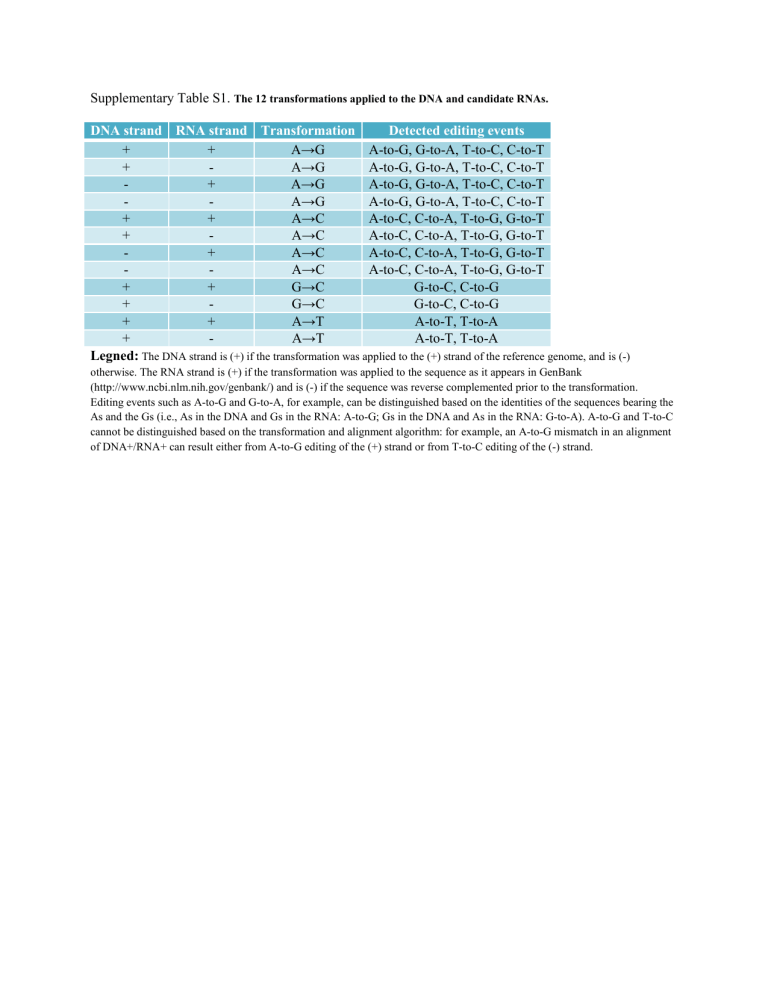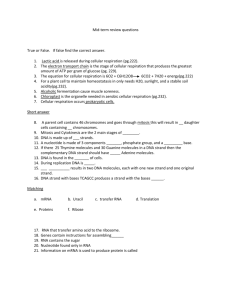Supplementary Table S1. The 12 transformations applied to the

Supplementary Table S1. The 12 transformations applied to the DNA and candidate RNAs.
DNA strand RNA strand Transformation
+
+
-
-
+
+
-
-
+
+
+
+
+
-
+
-
+
-
+
-
+
-
+
-
A→G
A→G
A→G
A→G
A→C
A→C
A→C
A→C
G→C
G→C
A→T
A→T
Detected editing events
A-to-G, G-to-A, T-to-C, C-to-T
A-to-G, G-to-A, T-to-C, C-to-T
A-to-G, G-to-A, T-to-C, C-to-T
A-to-G, G-to-A, T-to-C, C-to-T
A-to-C, C-to-A, T-to-G, G-to-T
A-to-C, C-to-A, T-to-G, G-to-T
A-to-C, C-to-A, T-to-G, G-to-T
A-to-C, C-to-A, T-to-G, G-to-T
G-to-C, C-to-G
G-to-C, C-to-G
A-to-T, T-to-A
A-to-T, T-to-A
Legned:
The DNA strand is (+) if the transformation was applied to the (+) strand of the reference genome, and is (-) otherwise. The RNA strand is (+) if the transformation was applied to the sequence as it appears in GenBank
(http://www.ncbi.nlm.nih.gov/genbank/) and is (-) if the sequence was reverse complemented prior to the transformation.
Editing events such as A-to-G and G-to-A, for example, can be distinguished based on the identities of the sequences bearing the
As and the Gs (i.e., As in the DNA and Gs in the RNA: A-to-G; Gs in the DNA and As in the RNA: G-to-A). A-to-G and T-to-C cannot be distinguished based on the transformation and alignment algorithm: for example, an A-to-G mismatch in an alignment of DNA+/RNA+ can result either from A-to-G editing of the (+) strand or from T-to-C editing of the (-) strand.







